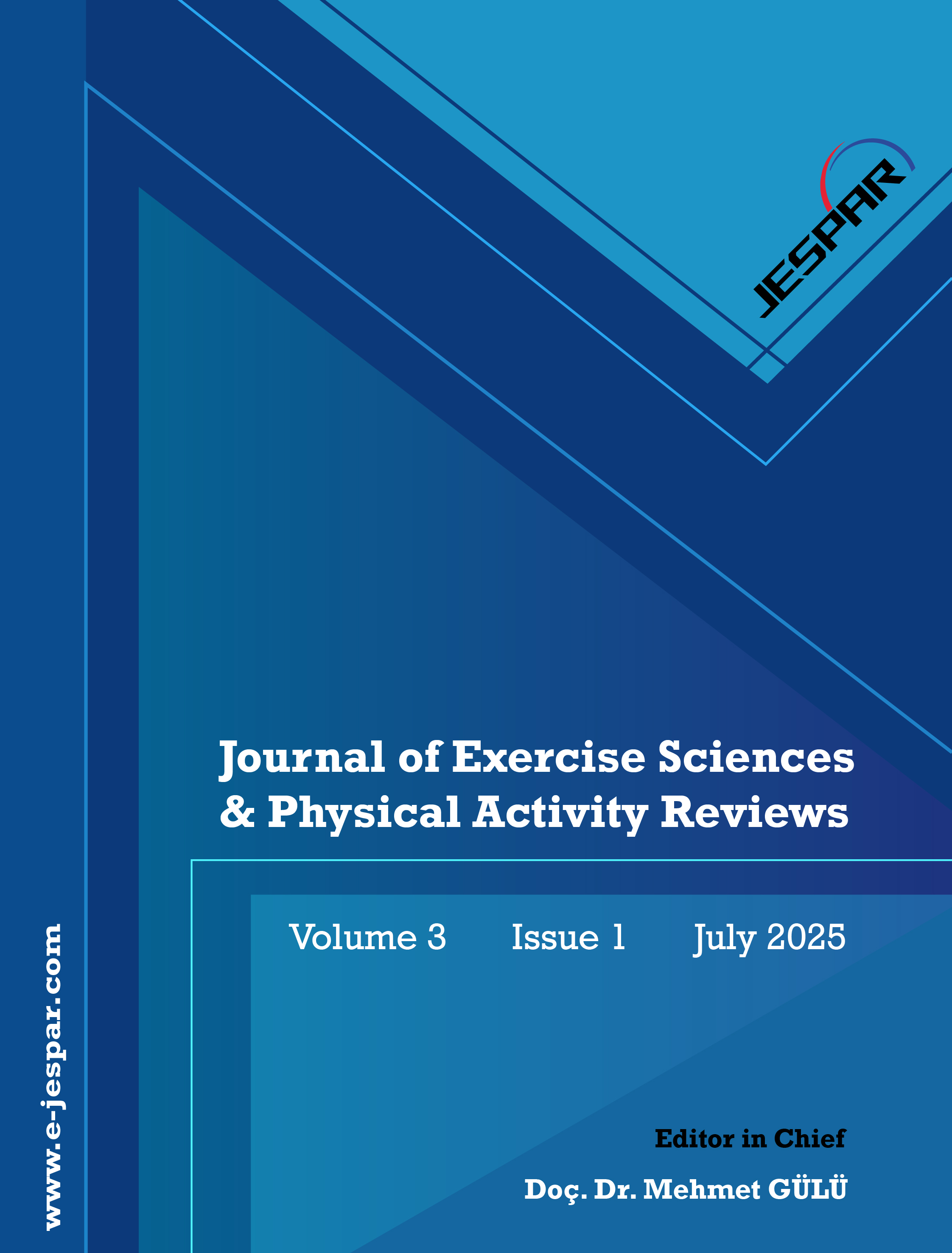Validity and reliability of tests to assess motor ability in people with Huntington's disease: a systematic re-view of the literature
DOI:
https://doi.org/10.5281/zenodo.15855468%20Keywords:
Motor assessment, Reliability, Functional mobility, Balance, Digital monitoring, Assessment tools, Neurodegenerative disordersAbstract
Huntington's disease (HD) is a rare, progressive neurodegenerative disorder characterized by movement disorders, cognitive impairment, and behavioral changes. Due to significant motor difficulties, accurate assessment of motor abilities is crucial for monitoring disease progression. The aim of the review was to evaluate the validity and reliability of clinical tests used to assess motor abilities in individuals with HD. A systematic review of the literature in the PubMed and Scopus databases included studies that examined the reliability and/or validity of various clinical tests in individuals with HD. Twelve studies were included in the analysis. The most commonly used and reliable tests are: the Unified Huntington’s Disease Rating Scale, the Timed Up and Go test, the Berg Balance Scale, the Tinetti Mobility Test, the Functional Reach Test, and the Six-Minute Walk Test. Digital tools, dynamometry, and gait analysis also show promise. Balance and mobility tests, such as the Berg Balance Scale, Timed Up and Go, Tinetti Mobility Test, and the Unified Huntington’s Disease Rating Scale, consistently demonstrated high reliability and validity. These tools are well-suited for clinical use in assessing motor function in individuals with Huntington’s disease. However, further research with larger and more homogeneous samples is needed to confirm these findings and improve generalizability.
References
Ajitkumar, A., & De Jesus, O. (2025). Huntington Disease. In StatPearls. StatPearls Publishing. http://www.ncbi.nlm.nih.gov/books/NBK559166/
Busse, M. E., Hughes, G., Wiles, C. M., & Rosser, A. E. (2008). Use of hand-held dynamometry in the evaluation of lower limb muscle strength in people with Huntington’s disease. Journal of Neurology, 255(10), 1534–1540. https://doi.org/10.1007/s00415-008-0964-x
Franklin, G. L., Teive, H. A. G., Tensini, F. S., Camargo, C. H. F., de Lima, N. de S. C., dos Santos, D. de C., Meira, A. T., & Tabrizi, S. J. (2024). The Huntington’s disease gene discovery. Movement Disorders, 39(2), 227–234. https://doi.org/10.1002/mds.29703
Galvez, V., Ramírez-García, G., Hernandez-Castillo, C. R., Bayliss, L., Díaz, R., Lopez-Titla, M. M., Campos-Romo, A., & Fernandez-Ruiz, J. (2018). Extrastriatal degeneration correlates with deficits in the motor domain subscales of the UHDRS. Journal of the Neurological Sciences, 385, 22–29. https://doi.org/10.1016/j.jns.2017.11.040
Goldberg, A., Schepens, S. L., Feely, S. M. E., Garbern, J. Y., Miller, L. J., Siskind, C. E., & Conti, G. E. (2010). Deficits in stepping response time are associated with impairments in balance and mobility in people with Huntington disease. Journal of the Neurological Sciences, 298(1–2), 91–95. https://doi.org/10.1016/j.jns.2010.08.002
Humbert, S., & Barnat, M. (2022). Huntington’s disease and brain development. Comptes Rendus. Biologies, 345(2), 77–90. https://doi.org/10.5802/crbiol.93
Huntington, H. S. G. (1996). Unified Huntington's disease rating scale: reliability and consistency. Movement disorders, 11(2), 136-142. https://doi.org/10.1002/mds.870110204
Kloos, A. D., Fritz, N. E., Kostyk, S. K., Young, G. S., & Kegelmeyer, D. A. (2014). Clinimetric properties of the Tinetti Mobility Test, Four Square Step Test, Activities-specific Balance Confidence Scale, and spatiotemporal gait measures in individuals with Huntington’s disease. Gait & Posture, 40(4), 647–651. https://doi.org/10.1016/j.gaitpost.2014.07.018
Kloos, A. D., Kegelmeyer, D. A., Young, G. S., & Kostyk, S. K. (2010). Fall risk assessment using the Tinetti Mobility Test in individuals with Huntington’s disease. Movement Disorders, 25(16), 2838–2844. https://doi.org/10.1002/mds.23421
Li, X.-Y., Bao, Y.-F., Xie, J.-J., Qian, S.-X., Gao, B., Xu, M., Dong, Y., Burgunder, J.-M., & Wu, Z.-Y. (2022). The Chinese version of UHDRS in Huntington’s disease: Reliability and validity assessment. Journal of Huntington’s Disease, 11(4), 407–413. https://doi.org/10.3233/JHD-220542
Lipsmeier, F., Simillion, C., Bamdadian, A., Tortelli, R., Byrne, L. M., Zhang, Y.-P., Wolf, D., Smith, A. V., Czech, C., Gossens, C., Weydt, P., Schobel, S. A., Rodrigues, F. B., Wild, E. J., & Lindemann, M. (2022). A remote digital monitoring platform to assess cognitive and motor symptoms in Huntington disease: Cross-sectional validation study. Journal of Medical Internet Research, 24(6), e32997. https://doi.org/10.2196/32997
McColgan, P., & Tabrizi, S. J. (2018). Huntington’s disease: A clinical review. European Journal of Neurology, 25(1), 24–34. https://doi.org/10.1111/ene.13413
Plácido, E., Gomes Welter, P., Wink, A., Karasiak, G. D., Outeiro, T. F., Dafre, A. L., ... & Brocardo, P. S. (2023). Beyond motor deficits: environmental enrichment mitigates Huntington’s disease effects in YAC128 mice. International Journal of Molecular Sciences, 24(16), 12607. https://doi.org/10.3390/ijms241612607
Quinn, L., Khalil, H., Dawes, H., Fritz, N. E., Kegelmeyer, D., Kloos, A. D., Gillard, J. W., & Busse, M. (2013). Reliability and minimal detectable change of physical performance measures in individuals with pre-manifest and manifest Huntington disease. Physical Therapy, 93(7), 942–956. https://doi.org/10.2522/ptj.20130032
Rao, A. K., Muratori, L., Louis, E. D., Moskowitz, C. B., & Marder, K. S. (2009). Clinical measurement of mobility and balance impairments in Huntington’s disease: Validity and responsiveness. Gait & Posture, 29(3), 433–436. https://doi.org/10.1016/j.gaitpost.2008.11.002
Rao, A. K., Quinn, L., & Marder, K. S. (2005). Reliability of spatiotemporal gait outcome measures in Huntington’s disease. Movement Disorders, 20(8), 1033–1037. https://doi.org/10.1002/mds.20482
Roos, R. A. (2010). Huntington’s disease: A clinical review. Orphanet Journal of Rare Diseases, 5, 40. https://doi.org/10.1186/1750-1172-5-40
Winder, J. Y., Roos, R. A. C., Burgunder, J., Marinus, J., & Reilmann, R. (2018). Interrater reliability of the Unified Huntington’s Disease Rating Scale‐Total Motor Score certification. Movement Disorders Clinical Practice, 5(3), 290–295. https://doi.org/10.1002/mdc3.12618
Youssov, K., Dolbeau, G., Maison, P., Boissé, M.-F., Cleret De Langavant, L., Roos, R., & Bachoud-Lévi, A.-C. (2013). Unified Huntington’s Disease Rating Scale for advanced patients: Validation and follow-up study. Movement Disorders, 28(12), 1717–1723. https://doi.org/10.1002/mds.25654
Downloads
Published
How to Cite
Issue
Section
License
Copyright (c) 2025 Journal of Exercise Science & Physical Activity Reviews

This work is licensed under a Creative Commons Attribution-NonCommercial 4.0 International License.





